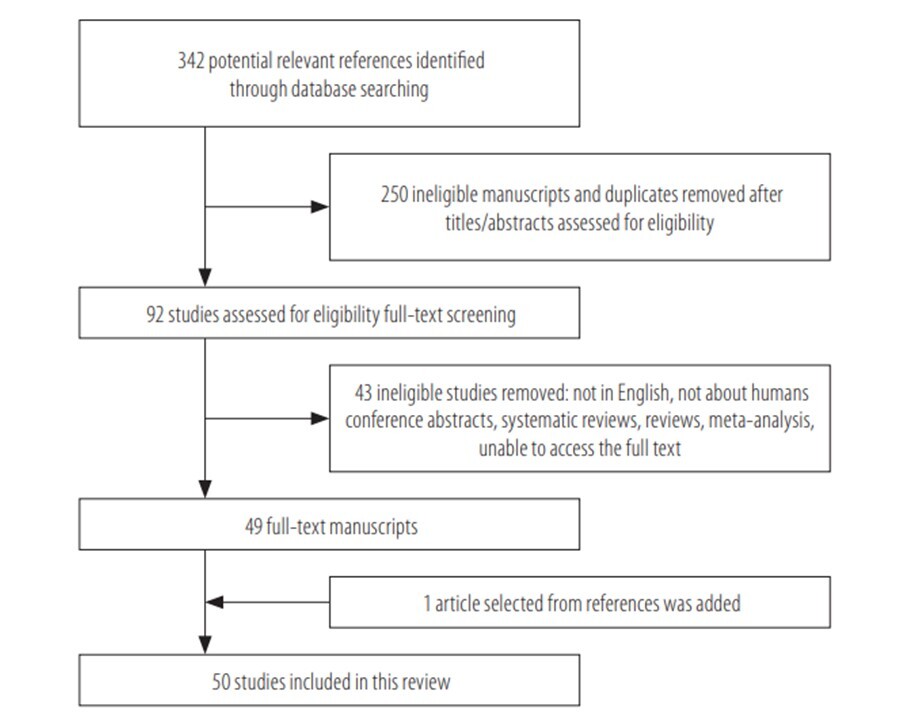Online first
Current issue
Archive
Most cited in 2024
About the Journal
Editorial Office
Editorial Board
Copyright and self-archiving policy
Information clause on the processing of personal data
Declaration of accessibility
Instructions for Authors
Instructions for Reviewers
Contact
Reviewers
2024
2023
2022
2020
2021
2019
2018
2017
2016
2015
2014
2013
Editing and translations
REVIEW PAPER
Gene-occupation interactions: a review of the literature on bladder and prostate cancer
1
Nofer Institute of Occupational Medicine, Łódź, Poland (Department of Translational Research)
2
Vrije Universiteit Brussel, Brussels, Belgium (Faculty of Medicine and Pharmacy, Department of In Vitro Toxicology and Dermato-Cosmetology)
Online publication date: 2023-05-16
Corresponding author
Edyta Wieczorek
Nofer Institute of Occupational Medicine, Department of Translational Research, św. Teresy 8, 91-348 Łódź, Poland
Nofer Institute of Occupational Medicine, Department of Translational Research, św. Teresy 8, 91-348 Łódź, Poland
Med Pr Work Health Saf. 2023;74(2):127-44
KEYWORDS
TOPICS
ABSTRACT
Bladder cancer (BCa) and prostate cancer (PCa) are genitourinary cancers which constitute significant health problems in men and in which environmental factors play an important role. Understanding the genetic susceptibility to BCa or PCa and occupational exposure is paramount to improving cancer prevention and early detection. The aim of this review article was to address the scientific evidence on the genetic risk factors and occupational exposure associated with the occurrence of BCa and PCa. The authors identified relevant original articles that have been published between 1994 and 2023. Variations of the following search terms: “gene” and “occupational” combined with one of the following terms: “bladder cancer” or “prostate cancer” were applied for the search purpose. The authors found 342 publications of which 50 population studies met their requirements for gene-occupation interactions. In total, 34 full-text manuscripts were about BCa and 16 about PCa. These research examines the genes involved in detoxification processes of xenobiotics (glutathione S-transferase, N-acetyltransferase, cytochrome P450, UDP-glucuronosyltransferase), oxidative stress (glutathione peroxidase 1, manganese superoxide dismutase, catalase), altering DNA repair capacity (X-ray repair cross-complementing 1, base excision repair, nucleotide excision repair), tumour suppression (TP53 gene), and vitamin D pathway (vitamin D receptor gene). The role of genetic factors in the occupational exposure has not been conclusively established, but it appears the possibility of genetic involvement. Determination of environmentally responsive genes provides important mechanistic implications for the etiology of occupational cancers, and valuable input in occupational exposure limits set by taking genetic susceptibility into account. More genetic research is needed to corroborate these findings and assess their significance in the workplace. Med Pr. 2023;74(2):127–44
We process personal data collected when visiting the website. The function of obtaining information about users and their behavior is carried out by voluntarily entered information in forms and saving cookies in end devices. Data, including cookies, are used to provide services, improve the user experience and to analyze the traffic in accordance with the Privacy policy. Data are also collected and processed by Google Analytics tool (more).
You can change cookies settings in your browser. Restricted use of cookies in the browser configuration may affect some functionalities of the website.
You can change cookies settings in your browser. Restricted use of cookies in the browser configuration may affect some functionalities of the website.






